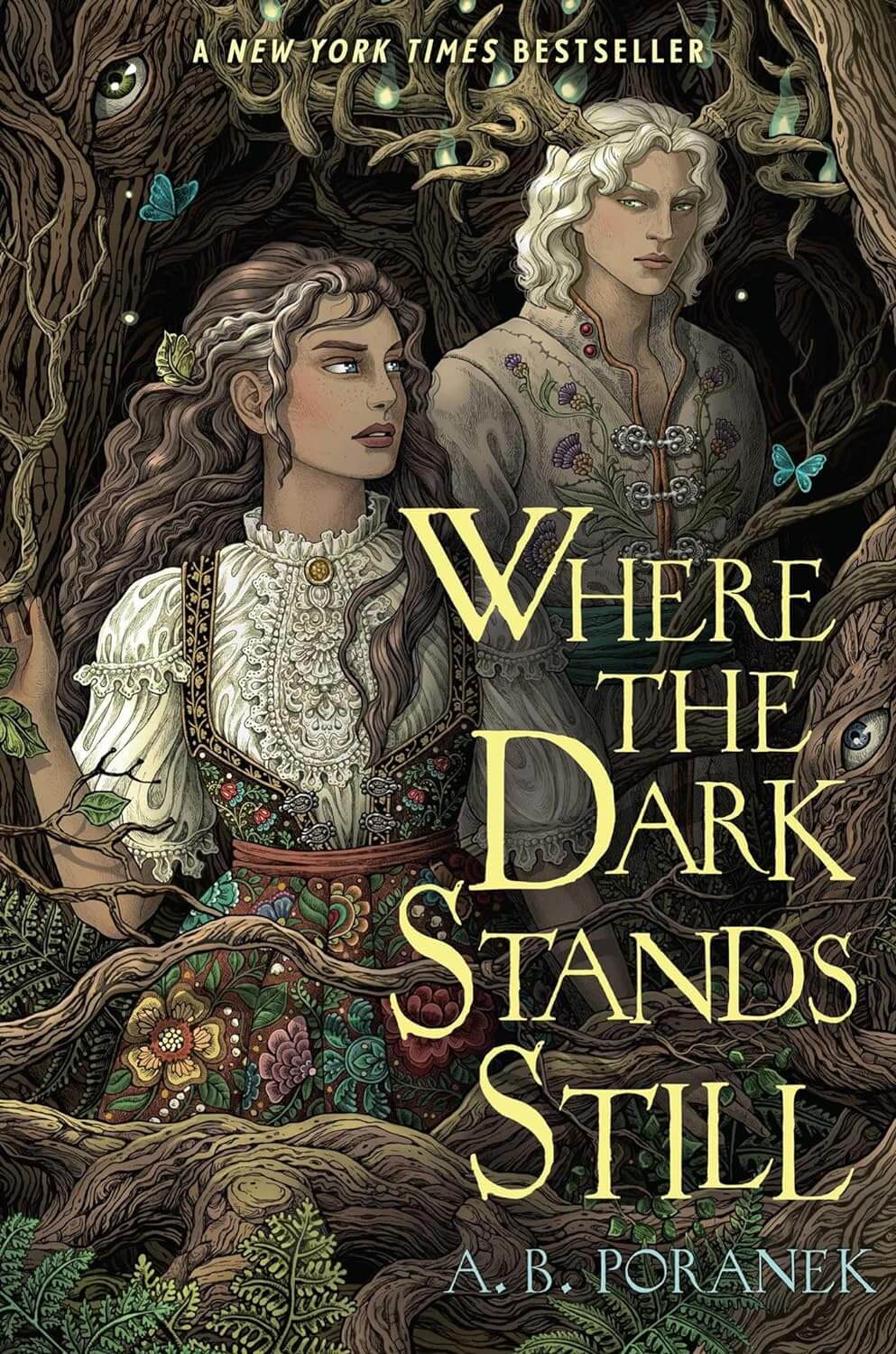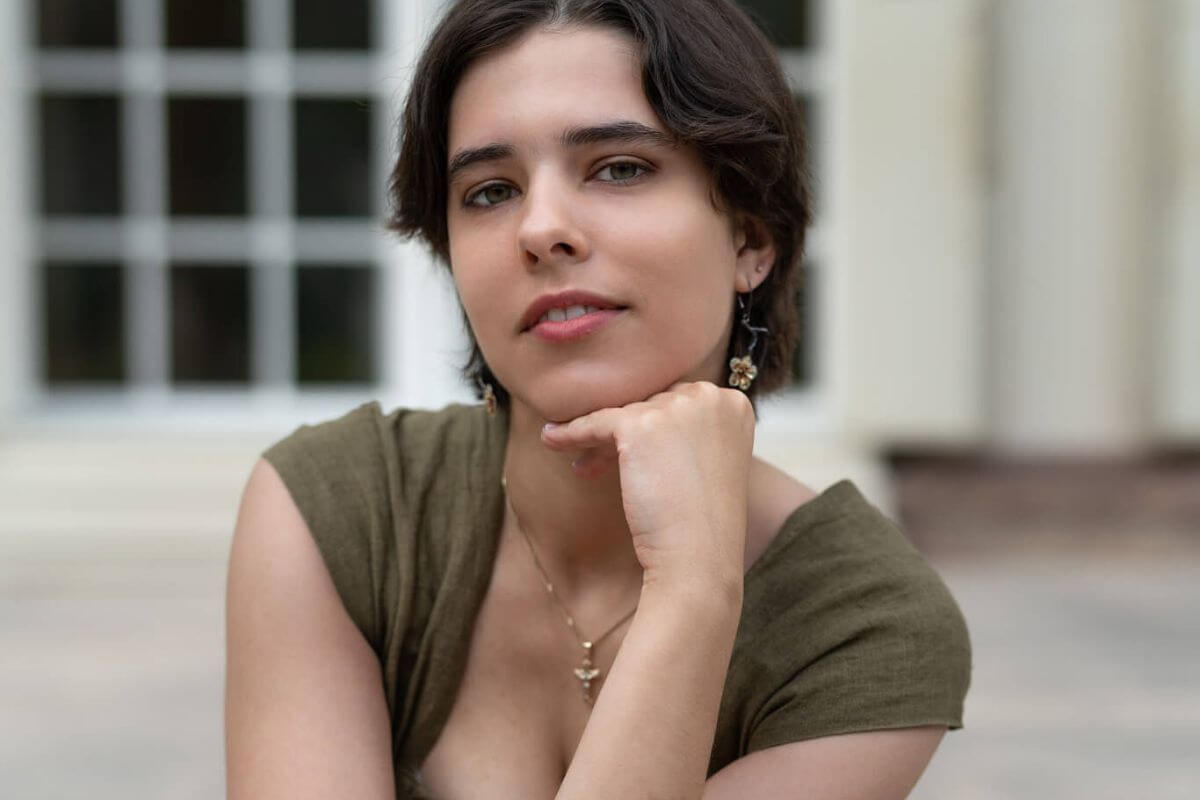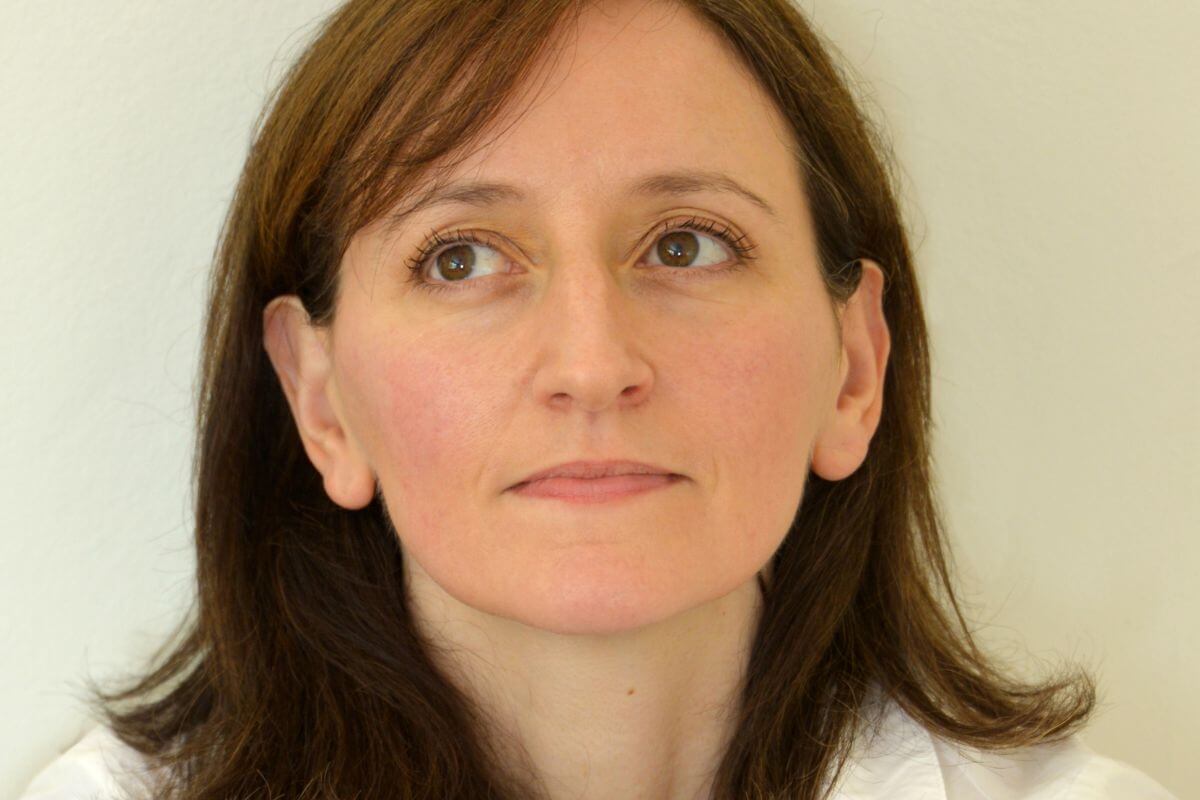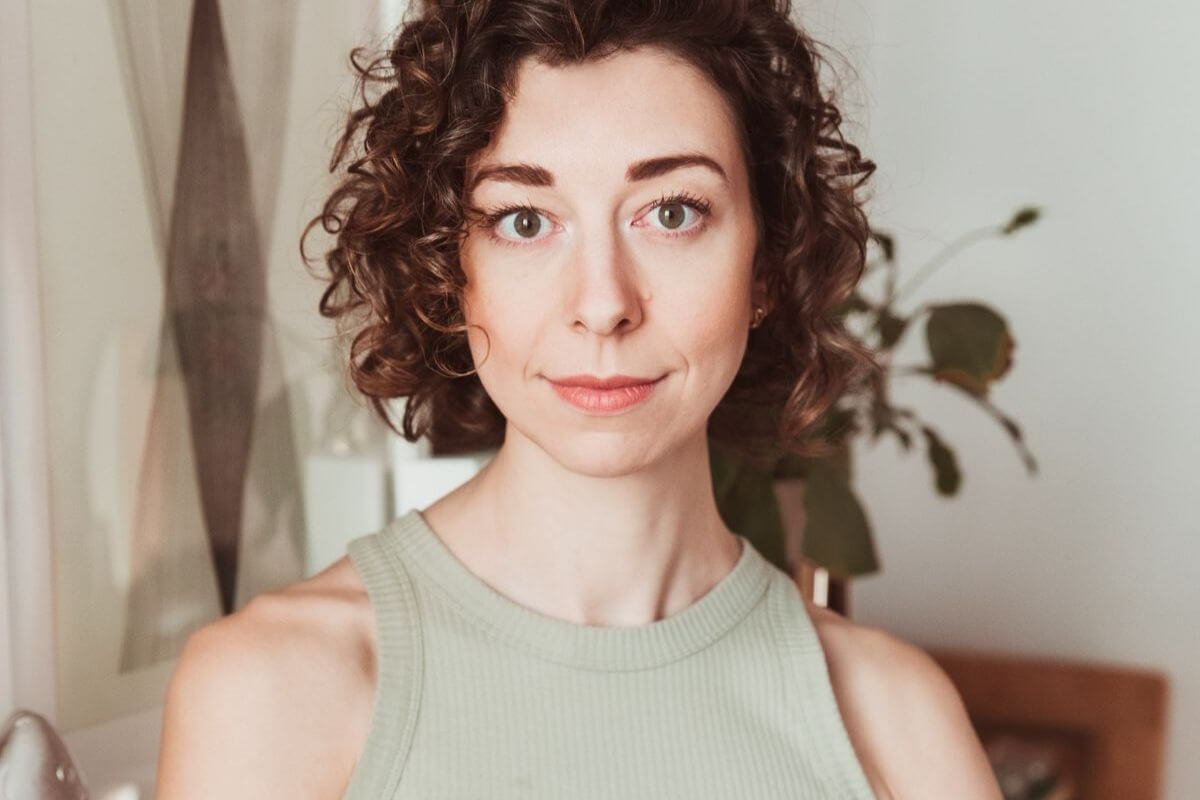A.B. Poranek’s debut novel, Where the Dark Stands Still, is a hit romantasy novel inspired by folktales her grandfather told her every summer she spent with him in the Polish countryside reading under apple trees and taking care of his chickens. Her story is all about claiming the power inside us all to protect the ones we love. Our interview with her goes deeper into the Polish folktales that inspired the story, her experience with writing YA romantasy, and what her future stories may look like.

Where The Dark Stands Still by A.B. Poranek
Liska knows wielding magic is a dangerous and shameful practice, which is why she has been working hard to suppress the magic she feels within her. But there is only one thing that can rid her of this curse, a flower from a magic fern held deep in the spirit-world, full of monsters, demons, and other horrors Liska could never have imagined, including the demon warden of the woods, The Leszy. The Leszy makes a deal with Liska, spend a year in the spirit-world and be his servant and she will receive the magic flower. Liska soon learns she isn’t the first one to strike this deal, and everyone before her who had, went missing before their year was up. It is up to her to discover the truth about the flower and claim the power within her to save herself.
Buy the book now: Bookshop.com | Amazon | Barnes & Noble
What inspired you to write Where the Dark Stands Still?
In one word: the Leszy. Something about him as a mythological figure – the idea of a fickle forest demon capable of both saving souls lost in the forest or damning them depending on nothing but his own whims. Polish people love forests – mushroom and wild blueberry gathering are popular activities in Poland, as is hiking – and it somehow just felt right to set a story in a fantasy version of Poland, featuring this mythological figure as a love interest. WTDSS went through several different iterations and false starts, but he was the one element that never changed!
Where did your writing journey start?
It’s a little cliché but I’ve been writing since I knew how to! I was always told by teachers I should pursue it, but when you’re from a Polish immigrant family you’re basically expected to go into a STEM field. It was midway through a veterinary degree that Caraval by Stephanie Garber found its way into my hands – I don’t know what it was about that book in particular, but it’s such a whimsical novel, and it reminded me how much I love storytelling. I was growing progressively more disillusioned with my degree, so I set myself the goal of publishing a book, and worked towards it until I got there (leaving behind the corpses of a few manuscripts in the process, may they rest in peace)
What were some of the challenges you encountered in the writing process?
I think the magic system in this book gave me the most trouble – it went through several iterations as I tried to create one that was flexible enough to let me do basically whatever I wanted but also strict enough to act as an obstacle in the narrative when I needed it to. Finding balance in that was tricky, especially as someone who enjoys books with very loose, whimsical magic.
How did you decide to, and in what ways, did you incorporate Polish folklore?
I wanted to create a setting that would allow for me to draw on all my favorite elements from both Polish folklore and Slavic myth. The fern flower has been one that I’ve loved since I was a kid, and I always wanted to tell a story based on it. And the Leszy of course was the most important: he was the cornerstone, the centerpiece of the story from the very beginning. Everything else was built around him.
What advice do you have for fellow authors who want to base a story off of folklore?
Do your research – understand where the story comes from, its core themes, and why its persevered throughout history. I actually think perfect accuracy isn’t important – so many myths come from oral tradition and have likely transformed through generations. But in order to manipulate a myth or folktale to suit your story, you first have to understand it’s heart, the culture from which it comes, and I think that’s the most important.
What are some of the tenets of folktales that you feel should be included in any story like yours?
A very common reoccurring theme in Polish folktales in particular revolves around either greed or the titular evil being defeated by a clever commoner – the fern flower, for example, is often found by a little boy who is given all the riches he desires, but can’t share them. Meanwhile the Wawel dragon is defeated by a humble cobbler who feeds it a sheep’s body stuffed with sulfur. Both of these I think say a lot about traits valued in Polish culture and are aligned with its traditional Catholic values. Understanding this kind of origin helps to see below the surface of any fairytale!
“Romantasy” has exploded in recent years, what drew you to this genre?
I actually never thought of WTDSS as a romantasy – that was a concept that was first introduced to me by my publishers, since it became a popular term after WTDSS was acquired. I would actually call WTDSS a Gothic first, and romantasy second; yes, it does have a heavy focus on romance, but it also has the dark, haunting atmosphere of a Gothic, and themes appropriate to that genre. I think that alignment becomes much more apparent towards the third act of the novel in the way certain scenes unravel. (and that’s all I will say about that, no spoilers here!)
Who are some authors you draw inspiration from?
Naomi Novik and Margaret Rogerson are two of my biggest writing inspirations – Novik for the way she weaves folklore and traditional fairytales into intricate plotlines while building incredibly compelling characters, and Rogerson for the way she writes such lively, imaginative settings that feel like modern fairytales themselves, incorporating atmosphere and believable, flawed heroines (along with some of my favorite romantic dynamics!)
What is the best piece of writing advice you ever received?
The first draft is telling yourself the story – I always remind myself of this one, because I’m a discovery writer and my very first drafts are always disasters that are probably utterly incomprehensible to anyone but myself. The second draft is always where I smooth things out, define character personalities and tie all of the messy threads I left loose in the original text.
What are you working on next?
I’m not sure how much I’m allowed to say about this yet, but my next novel is a sapphic retelling of Swan Lake, set in a maze-like palace where old magic rots in forgotten corridors and golden-blooded monsters stalk the night – all while one villainous girl plans the heist of a lifetime.














Leave A Comment